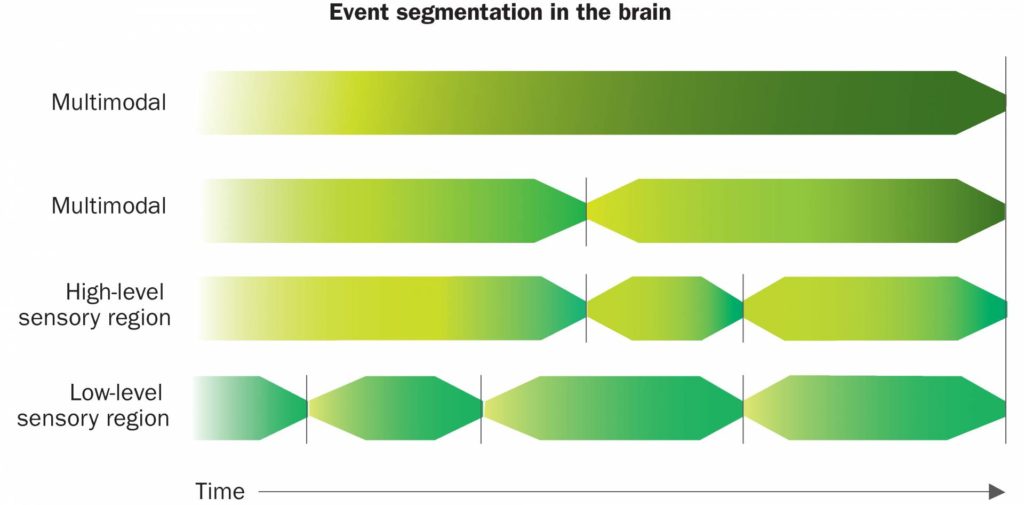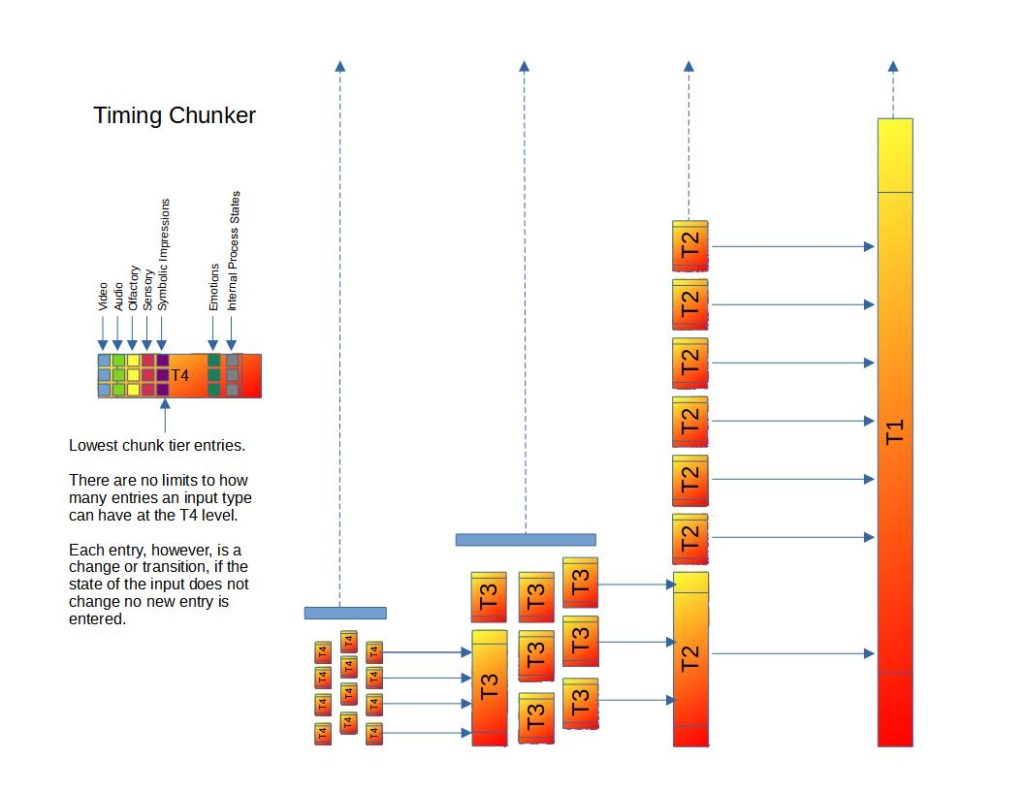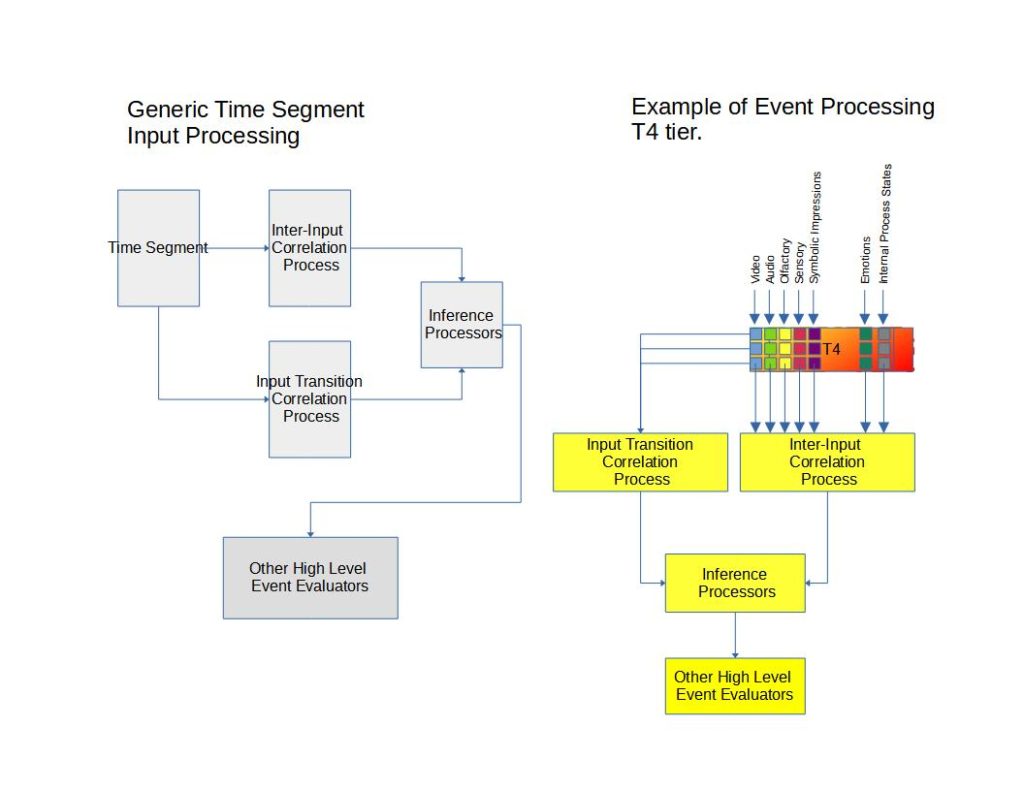
Image from the article cited in the post.
Time is a very interesting topic in the understanding of human consciousness. For one; we have a sense of the moment that is of some kind of time depth. Here’s an article that cites a paper that explores this phenomenon. The revelation from this research is brains break time into chunks with hierarchal tiers. The advantage to such a chunking scheme is the ability to correlate multiple temporal events as collections of stimuli and provide a hierarchal order or sense that allows for the concept of presence where there is a link from the past to the present. That paper inspired a machine implementation, below is a concept diagram:

Machine implementation of a time chunking scheme. Each tier T1 to T4 represents a time or event segment, where T1 is the longest and T4 is the shortest period time segment. Each higher event segment is the parent of a lower-level segment.
The chunking model breaks event segments into 4 tiers where T1 is the longest and T4 is the shortest period. You’ll note that T4 is where all the input data is captured. Input data is not just information from sensory data such as visual, audio, olfactory, tactile, and taste but also internal states of the machine inclusive of interpreting stimuli as emotions. The T4 level allows for as much input capture as possible within its period. Additionally, the T4 level only stores inputs if they have changed. One of the benefits of this structure is the ability to correlate input transitions and also correlate across input types or inter-input-type correlation. This allows for inferencing across temporal events, input types, and input transitions.

As mentioned before each tier processes inter-correlations across event segments. This would give a machine an equivalent perspective of time as a concept of some structure to its experience to stimuli as a human being! The approach provides that sense of past that correlates to the present and could be used to contemplate or predict future outcomes.
From what the paper describes as tiered hierarchies that build higher-level cognitive synergies machines could apply identical approaches as biological systems. The inference processing as well as higher-level event evaluations can be heuristics or ANNs and/or both.